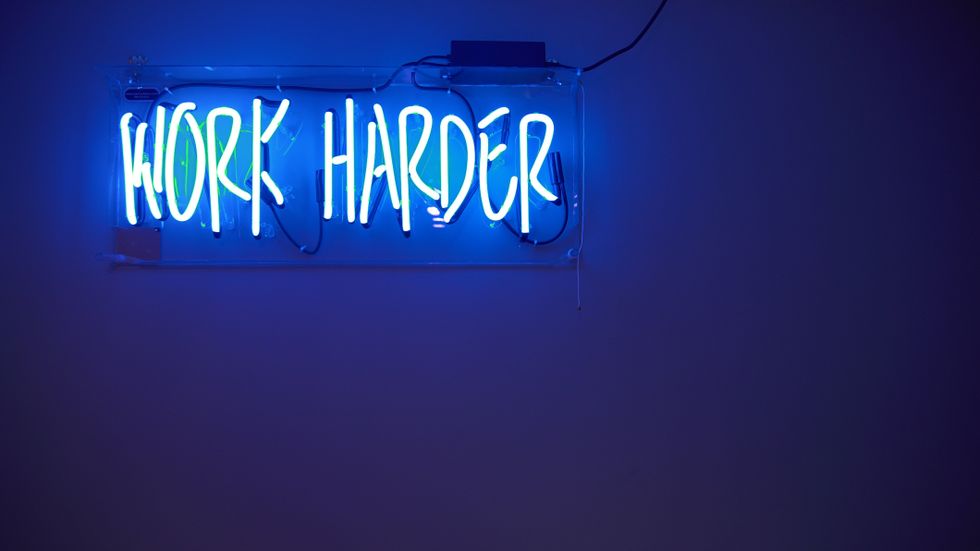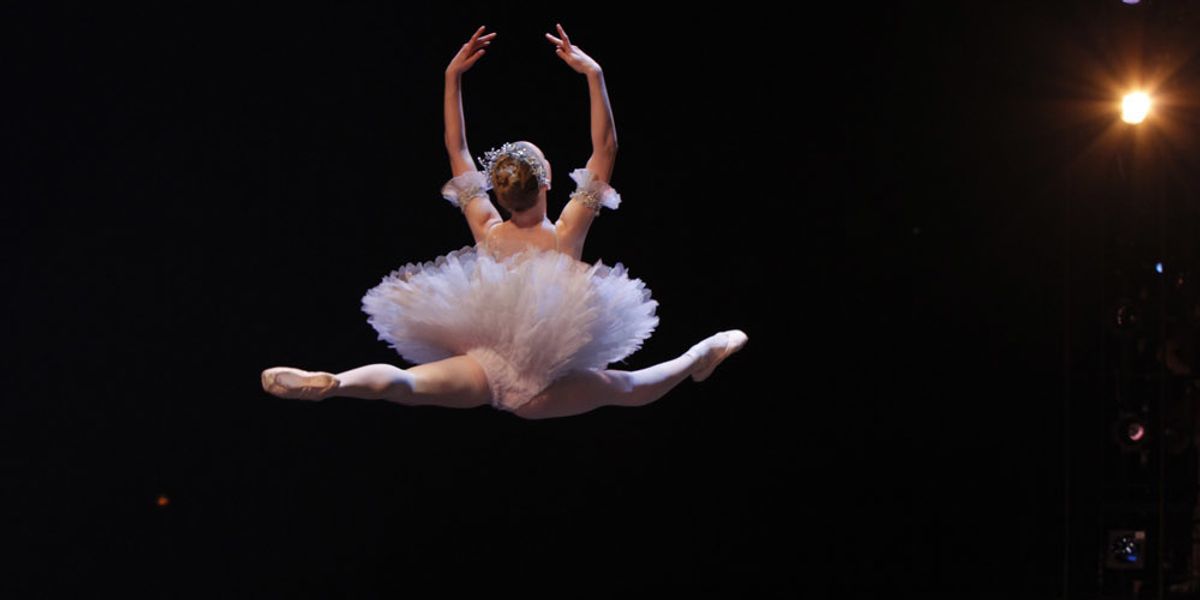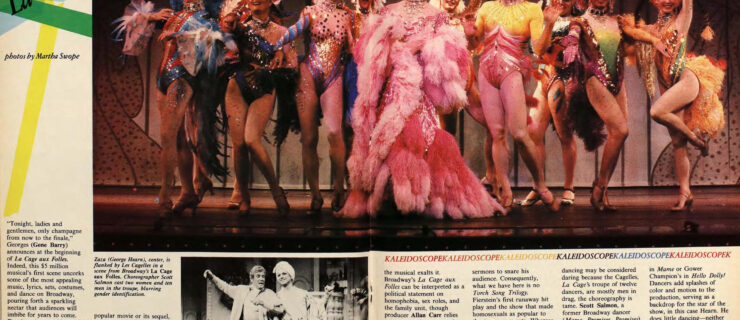You Responded: The Issues You Want Dance Companies To Address—And How Change Might Happen
We all know that companies too often take dancers for granted. When I wrote last week about a few common ways in which dancers are mistreated—routine screaming, humiliation, being pressured to perform injured and be stick-thin—I knew I was only scratching the surface.
So I put out a call to readers asking for your perspective on the most pressing issues that need to be addressed first, and what positive changes we might be able to make to achieve those goals.
The bottom line:
Readers agree it’s time to hold directors accountable, particularly to make sure that dancers are being paid fairly. But the good news is that change is already happening. Here are some of the most intriguing ideas you shared via comments, email and social media:
1. We Need to Fight For Fair Pay

Photo by Matthew Murphy for Pointe
Many readers felt that the most serious abuse of dancers is how they are paid—or not paid. Some responders shared how they’ve gotten stuck in the trap of dancing for free, while others highlighted how big of a gap remains between the salaries of male and female performers.
“Dancers shouldn’t be used for free labor at any level. If someone is an unpaid trainee, they need to at least be paid for performances. The ‘hordes of young dancers’ waiting to take spots instills fear and that fear is perpetuated by artistic staff who flat out say, I’ll find someone to take your place and I won’t even pay them.” —Jess Spinner
“My daughter has fallen into the trap of this new craze of ‘trainee programs’ and ‘second company’ shenanigans. While the companies are benefiting since they’re being able to stage larger productions that would require a copious corps de ballet, at the end of their season they just bring a new ‘batch’ of young dancers and let go the ones they have freely used, that is the word, used, for a whole season. It is enraging to watch these dancers scrambling around, moving from one city to another, jumping from one trainee/second company to another, having to find a second job to support themselves just to keep the ‘dream’ alive.” —Anonymous
“Right out of college I accepted a dance position on a cruise ship. I was offered $600 per week. My fellow female dancers both with three+ more years of experience were offered the same rate. Three other men directly out of college were offered $750 per week. I debated reaching out to the company. My fellow female dancers said when they asked for a raise they were fired on the spot, told someone cheaper would replace them.” —Jennifer Binversie
“Dance companies in the US walk a fine line between being groups of artists pursuing a shared mission and operating as businesses in a capitalist culture. All the time, the pull of artistic exploration, integrity, purity, whatever you want to call it, loses out to the need to succeed as a commercial enterprise. I don’t have the answer to how to provide a respectable (financially) stable job environment, and it may require a cultural shift that is impossible in our society, but at least let’s talk about it.” —Gavin Larsen
“State support would provide stability and mitigate risks for dancers. If you fix the economic pressure, many issues that fall under ‘negative company culture’ would organically improve.” —Paul Destrooper
2. We Need Incentives That Inspire Change (Hint: Money)

Photo by Jordan Whitfield/Unsplash
Some readers pointed out that currently, there’s little incentive for companies to treat dancers better. A few questioned whether it would be possible to find some third party that could hold directors accountable.
“I am wondering if it is possible to ask the National Endowment for the Arts or other granting entities to hold beneficiaries of their grants to higher standards. I am wondering if government grants in particular shouldn’t be given to organizations that condone and practice racial discrimination or other behaviors that both legal precedent and common sense condemn.” —Anonymous
3. Dancers Should Watch Out For Red Flags

Photo by Matthew Murphy for Pointe
Of course, not all companies treat their members badly. So what are the red flags that could tip dancers off to unhealthy environments before they sign a contract? Toba Singer offered some savvy suggestions on how to investigate.
“Start by looking at companies where the turnover is high. How many dancers left this company last season? Why? Of those who left, how many were fired, how many went to other companies, how many gave up their careers and at what age? How about artistic staff? Are there ongoing ballet master/mistress vacancies? Why? Were lawsuits brought and then dropped against key personnel? This is relevant information.” —Toba Singer
4. We Can’t Lose Hope: There Is a Better Way Forward

Photo by Ed Shelley/Unsplash
Many dancers reached out with stories about how they had left prestigious companies for smaller troupes where they were treated better. Directors spoke of starting their own companies because they were driven to create a healthier environment than the one they experienced during their own dance career. Others were hopeful that positive changes are on the horizon.
“I’m currently dancing for PDX Contemporary Ballet in Portland, OR and all of these issues are ones that my director is actively working against. There is no pressure to be a certain shape or size. I have never been asked to do anything beyond what I and my doctors feel is safe. Furthermore, I have grown so much artistically.” —Victoria Lauder
“This is a big part of why I wanted to start a company. It starts with hiring. When I put someone in a position of power, it’s someone who I think will use that power well, and with the explicit statement that any contractor or officer is there to serve the company. To me, ‘the company’ refers to the people as well as the legal entity. Another thing I do is interview each prospective dancer. I think it’s nuts how few directors think about company culture and I think it’s indicative of how much ego is the driving factor behind many directors. I’m clear with people what the philosophies of the company are, and I do my best to only bring on the people who can live it.” —Stirling Matheson
“By the time our generation ascends to the upper ranks, it’s going to be a huge switch.
A) The generation in charge now is the last group trained by teachers who hit them. Now that the dancers aren’t getting literally struck, they’re noticing how awful it is to have their psyches beaten down.
B) Dancers are using sports psychologists who emphasize positive visualization. They’re using yoga to cross train, which comes with a whole mindset of calm, peace and caring for your fellow humans. The input for dancers’ brains is creating a different attitude.
C) The social movements and causes of our generation are about kindness and compassion and empathy. We aren’t fighting wars that the young folks feel good about, so that army drill sergeant attitude isn’t jiving with us.
D) There are gonna be more women in charge. So fewer bosses who have suffered through the exaggerated toxic masculinity associated all too often with being a male dancer. Also, more people who are accustomed to being really poorly treated, who will either double down on vile words, or more likely (I think/hope) will try to rectify the situation.” —David Neal
“Times are changing and there seems to be more ‘bullying’ if you will, in the positive direction of ‘be a good person dude’ than ‘hey let’s beat these dancers down until they hate themselves.’ But we have to start workshopping better HR and training practices now because it will take another decade or so (if not more) for changes to be fully engaged by companies and choreographers.” —Erin Ghislin Lane
Some comments have been edited for length and clarity.





